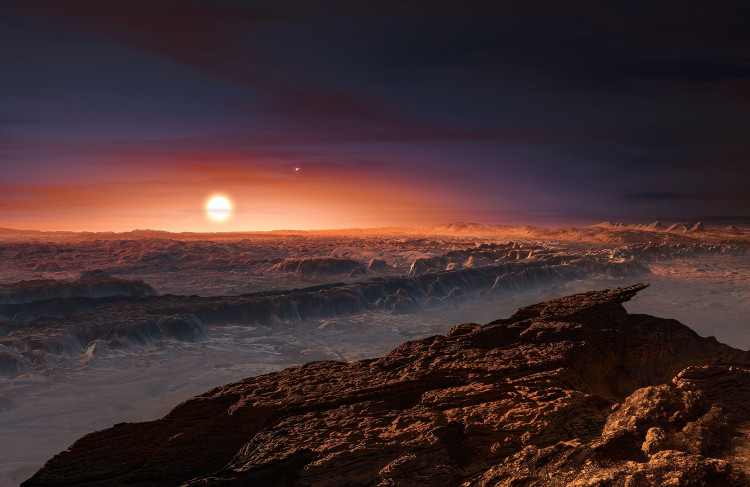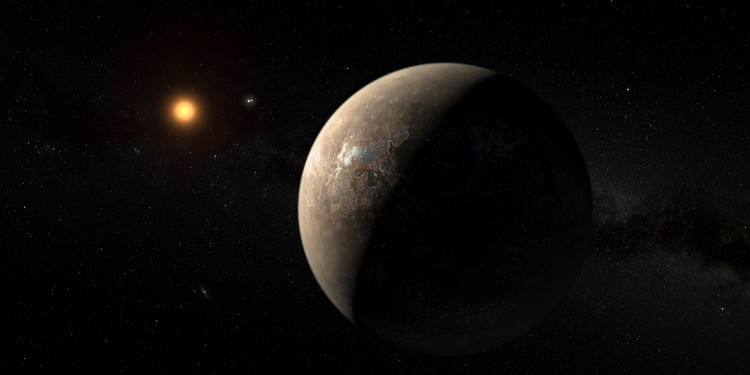The second earth may be a
Many scientists believe that Proxima b hardly has suitable conditions for developmental life.
In August 2016, ESO (European Aeronautics Agency) confirmed the existence of a Proxima b planet named "2nd Earth" in the extreme near us - only 4, 5 light years.
Proxima b revolves around its star in a period of 11 days, and with a "standard" distance to have a very balanced temperature, enough to maintain liquid water on the surface. This is said to be a sign of life on "2nd Earth".

Proxima b revolves around its star in an 11-day cycle.
However, scientists at Villanova University have recently suggested that Proxima is more likely than Tatooine - a rocky planet orbiting a binary star system, just like in a science fiction movie Star Wars (Star Wars).
Edward Guinan - Villanova University professor of astronomy, said the possibility is high that Proxima b has experienced "a hell" about 300-400 million years.
This is because Proxima b revolves around its star at close distance, equal to 1/20 of the distance between the Sun and Mercury. When Proxima was first discovered, this distance was considered to have potential for life.

The high possibility that Proxima b has experienced "a hell" is about 300-400 million years.
But now, researchers say, the two stars of Proxima b are called dwarfs . When young, they will fire X-rays and ultraviolet radiation - which can cause the planet to explode or vaporize any liquid on the planet.
Young stars also emit dangerous solar sparks and if there is a world turning around them - they can rip the atmosphere out of the planet.
Professor Edward Guinan said: "It is really difficult to survive on Proxima b". However, we still have hope to find aliens on it. "

Proxima b can still live if it has a strong magnetic field.
Victoria Meadows of the University of Washington: "Proxima b is still able to survive if it has a strong magnetic field, or has an abundance of hydrogen to protect. Otherwise, Proxima b must be farther away than its star. more now ".
The conclusion was announced at the American Astronomical Society meeting in Texas.
- 10 interesting facts about Earth you may not know
- The Earth may have swallowed its planet
- The 8 biggest mysteries about Earth
- History and meaning of Earth Day
- Scientists think that these are the eight most likely cases of life eradication
- Video: Discover everything about Earth
- Unbelievable facts about the Earth
- Earth Overshoot Day - the time when humanity abused resources exceeded Earth's recovery threshold
- Revealing the mysteries of the Earth makes everyone 'startled'
- Video: Earth image at night
- Impressive image of Earth Day
- Video: Interesting things about the Earth
 Van Allen's belt and evidence that the Apollo 11 mission to the Moon was myth
Van Allen's belt and evidence that the Apollo 11 mission to the Moon was myth The levels of civilization in the universe (Kardashev scale)
The levels of civilization in the universe (Kardashev scale) Today Mars, the sun and the Earth are aligned
Today Mars, the sun and the Earth are aligned The Amazon owner announced a secret plan to build a space base for thousands of people
The Amazon owner announced a secret plan to build a space base for thousands of people